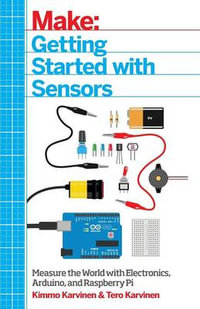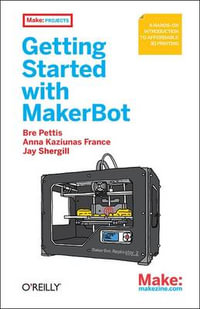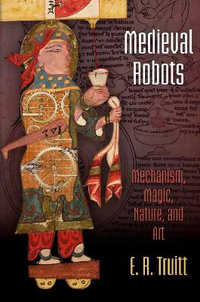| Introduction | p. 1 |
| Examples of Integral Processes with Dead Time | p. 1 |
| Tanks with an Outlet | p. 1 |
| Supply Chain Management Processes | p. 3 |
| Communication Networks | p. 3 |
| Other Examples | p. 4 |
| Overview of the Book | p. 5 |
| PID Control Schemes | |
| PID Control | p. 9 |
| PID Controllers | p. 9 |
| Basic Principles | p. 9 |
| Improvements | p. 11 |
| Identification | p. 13 |
| Open-loop Identification | p. 13 |
| Closed-loop Identification | p. 16 |
| Tuning Methods | p. 24 |
| Empirical Formulae | p. 25 |
| Analytical Methods | p. 26 |
| Frequency-domain Methods | p. 34 |
| Optimisation-based Methods | p. 41 |
| Conclusions | p. 47 |
| Stability Region | p. 49 |
| Stability Region Under the PI Control | p. 49 |
| Normalisation of the System | p. 49 |
| Stability Region | p. 50 |
| Achievable Stability Margins | p. 52 |
| An Illustrative Example | p. 55 |
| Stability Region Under the PID Control | p. 56 |
| IPDT Processes | p. 56 |
| SOIPDT Processes | p. 64 |
| Conclusions | p. 70 |
| Performance Assessment and Controller Retuning | p. 71 |
| Introduction | p. 71 |
| Problem Formulation | p. 72 |
| Performance Assessment | p. 73 |
| Estimation of the Process Parameters | p. 77 |
| Set-point Step Response | p. 77 |
| Load Disturbance Step Response | p. 79 |
| Retuning of the PID Controller | p. 81 |
| Simulation Results | p. 81 |
| Example 1 | p. 82 |
| Example 2 | p. 83 |
| Example 3 | p. 84 |
| Conclusions | p. 86 |
| Plug&Control | p. 87 |
| Methodology | p. 87 |
| Algorithm | p. 88 |
| Practical Considerations | p. 89 |
| Simulation Results | p. 90 |
| Conclusions | p. 92 |
| Two-degree-of-freedom Control Scheme | |
| Feedforward Control | p. 95 |
| Standard Two-degree-of-freedom Control Scheme | p. 95 |
| Two-state Time-optimal Feedforward Control | p. 96 |
| Methodology | p. 96 |
| Illustrative Examples | p. 98 |
| Noncausal Feedforward Action: Continuous-time Case | p. 99 |
| Generalities | p. 100 |
| Modelling | p. 100 |
| PID Controller Design | p. 101 |
| Output Function Design | p. 101 |
| Stable Input-Output Inversion Algorithm | p. 102 |
| Discussions | p. 106 |
| Practical Implementation | p. 107 |
| Simulation Results | p. 108 |
| Noncausal Feedforward Action: Discrete-time Case | p. 111 |
| Methodology | p. 112 |
| An Illustrative Example | p. 118 |
| Conclusions | p. 119 |
| PID-PD Control | p. 121 |
| The Control Scheme | p. 121 |
| PI-PD Structure | p. 121 |
| A Simple Approach | p. 122 |
| Tuning Method Based on the Standard Forms | p. 124 |
| PID-P Structure | p. 125 |
| Tuning Method Based on Sensitivity Specifications | p. 126 |
| Tuning Method Based on Phase and Gain Margins | p. 130 |
| Tuning Method Based on a New Robustness Specification | p. 132 |
| PID-PD Structure | p. 135 |
| Tuning Method Based on a New Robustness Specification | p. 136 |
| A More Complex Controller | p. 138 |
| Conclusions | p. 140 |
| Smith-predictor-based Control | p. 141 |
| Classical Smith Predictor | p. 141 |
| Modified Smith Predictor | p. 143 |
| Aström-Hang-Lim Modified Smith Predictor | p. 146 |
| Methodology | p. 147 |
| Robust Tuning Method | p. 148 |
| Simplified Tuning Method | p. 152 |
| Anti-windup Compensation | p. 155 |
| Matausek-Micic Modified Smith Predictor | p. 156 |
| Basic Scheme | p. 157 |
| Improvement | p. 159 |
| Normey-Rico-Camacho Modified Smith Predictor | p. 161 |
| Control Scheme | p. 162 |
| Robust Tuning | p. 163 |
| Improvement | p. 164 |
| An Alternative Approach | p. 166 |
| Anti-windup Strategy | p. 168 |
| Comparison with Other Schemes | p. 168 |
| Chien-Peng-Liu Modified Smith Predictor | p. 170 |
| Seshagiri Rao-Rao-Chidambaram Modified Smith Predictor | p. 173 |
| Tian-Gao Modified Smith Predictor | p. 175 |
| More Complex Schemes | p. 176 |
| Majhi-Atherton Modified Smith Predictor | p. 177 |
| Liu-Cai-Gu-Zhang Modified Smith Predictor | p. 180 |
| Lu-Yang-Wang-Zheng Modified Smith Predictor | p. 183 |
| Conclusions | p. 184 |
| Smith-principle-based PID-type Control | p. 187 |
| The Control Scheme | p. 187 |
| An Equivalent Structure for Implementation | p. 189 |
| Robustness Analysis | p. 190 |
| Simulation Examples | p. 193 |
| Conclusions | p. 193 |
| Disturbance Observer-based Control | p. 195 |
| Disturbance Observer | p. 195 |
| Control Structure | p. 196 |
| Controller Design to Reject Ramp/Step Disturbances | p. 197 |
| Design of Q(s) | p. 197 |
| Examples | p. 199 |
| Controller Design to Obtain Deadbeat Disturbance Responses | p. 203 |
| Design of Q(s) | p. 203 |
| Implementation of the Controller | p. 205 |
| Parameter Tuning and Robustness | p. 207 |
| Stability of the Controller | p. 210 |
| An Example | p. 212 |
| Conclusions | p. 212 |
| Quantitative Analysis | p. 213 |
| Introduction | p. 213 |
| The Lambert W Function | p. 214 |
| Achievable Specifications of the Sub-ideal Disturbance Response | p. 214 |
| Maximal Dynamic Error | p. 217 |
| Maximal Decay Rate | p. 218 |
| Control Action Bound | p. 219 |
| Approximate Recovery Time | p. 220 |
| Robust Stability Regions | p. 221 |
| With Gain Uncertainties | p. 222 |
| With Dead-time Uncertainties | p. 223 |
| With Dead-time and Gain Uncertainties | p. 225 |
| Stability of the Controller | p. 226 |
| Conclusions | p. 228 |
| Practical Issues | p. 229 |
| The Control Scheme Under Consideration | p. 229 |
| Zero Static Error | p. 230 |
| Internal Stability | p. 231 |
| Experimental Results | p. 232 |
| The Experimental Setup | p. 232 |
| The Scheme Shown in Figure 12.2(a) | p. 234 |
| The Scheme Shown in Figure 12.2(b) | p. 234 |
| The Scheme Shown in Figure 12.3 | p. 235 |
| Comparison with a PI Controller | p. 239 |
| Robustness with Respect to Changes in the Dead Time | p. 239 |
| Conclusions | p. 239 |
| References | p. 241 |
| Index | p. 249 |
| Table of Contents provided by Ingram. All Rights Reserved. |
























